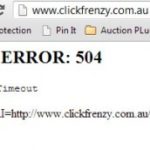So you have decided you need a new website, brochure or logo, and you have found a great designer. Now how do you care for them? What do they eat? When do they need vaccination?
We thought we would write a slightly tongue in cheek guide to caring for your designer.
Time
Time is without question the most valuable resource a designer has. Almost all designers bill or attribute costs to an hourly rate, making it THE defining element in any project. Good designers will have a project plan and time flow for any work they are doing, timing things down to the hour. Also most good designers are aware that most projects have things you can bill the client for, and things you can’t, meaning that we need to maximise the time spent working on client’s work, and minimise the time spent “just looking into things”.
So how does this impact the client? Nothing can really be just done “quickly”. The second a client asks “can you just quickly…” the designer has to start adjusting work flow on the fly. Most designers will be accommodating, but you should know that if you throw in a late change to a project like “I actually need that page finished by this Friday, not next month as I originally said” it can really throw out everything else in the timeline and will cause the designers some major headaches.
The other thing worth noting about time, is that when a designer says “this will probably take 10 hours” that is not some random number they came up with, that is the time it will take. If a client asks “can you do it in 5 hours” the real answer is “yes, but it means that only about 4 hours will be spent on the design and the final result will look crap!”
The problem is that designers make this bed for themselves. They may say yes the first time to a quick request, just to please the client and keep them happy. The client then expects this every other day, putting more and more pressure on the designer.
The Designs
Any good designer will probably go through close to a hundred iterations of something before they show a client. They will draw on experience with the media, the imagery and the copywriting to come up with something that works best to create an impact and draw in the client’s customer. Any changes, other than technical alterations to the product/service on display, will reduce the design value of the final product. If a client’s alterations are to be followed, the logo, the headline, the testimonial, the product image, the price, the price, the price, the telephone number, the website, the tag line, the offer, the money back guarantee and the website again would all be jostling for dominance on a 20cm x 20cm piece of 100gsm paper.
The best thing a client can do with a designer is give a quality brief, and then get out of the way.
Talk to us!
Your designers thrive on communication. If you don’t like the way something is panning out, say so. If you want something done differently, let us know. Don’t sit there in frustration and then think your designer has no idea. The more you can talk to your designer about what you want, the more likely you are to get what you ask for. If you have deadlines, pass those on. If you have expectations, let us know too!





